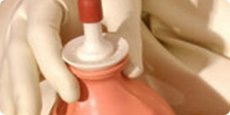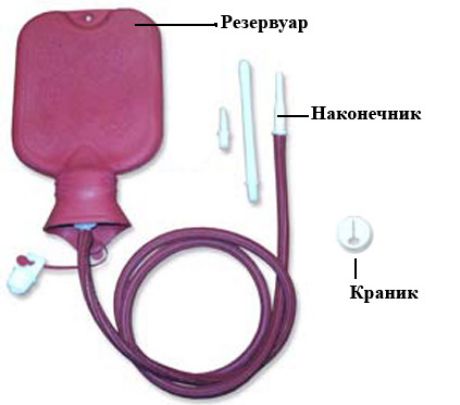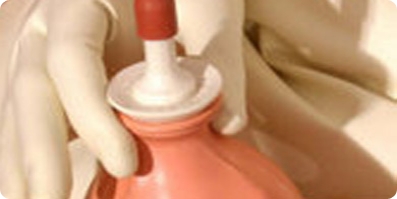
All iLive content is medically reviewed or fact checked to ensure as much factual accuracy as possible.
We have strict sourcing guidelines and only link to reputable media sites, academic research institutions and, whenever possible, medically peer reviewed studies. Note that the numbers in parentheses ([1], [2], etc.) are clickable links to these studies.
If you feel that any of our content is inaccurate, out-of-date, or otherwise questionable, please select it and press Ctrl + Enter.
Can enemas cause harm in constipation?
Medical expert of the article
Last reviewed: 08.07.2025

Constipation and enemas
Most adults often or sometimes deal with constipation. In most cases, constipation can be overcome without the use of laxatives and enemas, but instead of starting with lifestyle changes such as adding fiber to the diet, or including exercise in the daily routine, drinking more water, people use enemas. After all, it is much easier than working on yourself.
Using an enema or laxative can often help relieve constipation without causing damage to the anus. However, frequent use of enemas can cause problems with the muscles of the bowel over time. Regular use of enemas can prevent the muscles of the bowel from doing their job properly. You do not need to use enemas constantly to move your rectum to push out stool. You should consult a doctor if you are unable to have a bowel movement without stimulants.
Enema and water intoxication
You don’t want to hurt your bowel muscles, but regular use of enemas can cause your bowel to develop a condition called hyponatremia (or water intoxication). Hyponatremia is an electrolyte imbalance that occurs when your body doesn’t have enough sodium (salt). Severe hyponatremia can be dangerous and may need to be treated with medication or fluids prescribed by your doctor.
Never use unapproved enemas without your doctor's explicit instructions. If you have recently become dependent on enemas to heal and support your bowels, consult your gastroenterologist.
 [ 7 ], [ 8 ], [ 9 ], [ 10 ], [ 11 ]
[ 7 ], [ 8 ], [ 9 ], [ 10 ], [ 11 ]
When should you use enemas?
An enema can be used for a variety of purposes, including in preparation for a colonoscopy, sigmoidoscopy, surgery, or to treat constipation or fecal impaction. It may seem like a complicated procedure that is not easy to do on your own, but in fact, an enema can be done without difficulty in most cases. Save yourself time and follow your doctor's recommendations and instructions for inserting and administering an enema.

How to set up a simple enema?
Difficulty: easy
Time required: 2 hours
How to use an enema
- Remove the cap from the enema tip.
- If you anticipate discomfort and difficulty, lubricate the anus with Vaseline to make insertion of the enema easier.
- Lie on a couch or on the floor on your left side, with your right knee bent.
- Gently insert the enema tip into your rectum using your right hand. This may be uncomfortable, but it should not cause much pain.
- Push the liquid from the enema into the rectum by squeezing the bulb containing the liquid with your hand, or if it is a heating pad, the liquid will flow through the hose itself.
- Wait until the container is completely empty of enema fluid.
- Slowly remove the attachment from the rectum.
- Wait the recommended amount of time for the stool to be evacuated from your bowels. This can be anywhere from 2 to 15 minutes.
Standard Waiting Time for Results from Different Enema Preparations
- Bisacodyl: 15 minutes to 1 hour
- Docusate: 2 to 15 minutes
- Glycerin: 15 minutes to 1 hour
- Mineral oil: 2 to 15 minutes
- Senna: 30 minutes to 2 hours
- Sodium: 2 to 5 minutes
Stay near a toilet for the next 30 minutes to an hour, as you will need to evacuate your bowels several times.
Helpful tips for performing an enema
Always use the enema kit recommended by your healthcare provider.
Consult a gastroenterologist if you are unable to complete the enema process normally or experience severe discomfort or pain.
What you need for enemas
- Set of enemas
- Towels
- A large enough hard surface for you to lie down comfortably
Barium enemas
Barium enemas (also used for the lower GI tract) are a special type of enema that uses barium sulfate and air to examine the lining of the rectum and colon. Barium sulfate is a chemical suspension in water that shows up parts of the colon on x-ray film.
Barium sulfate is given as an enema and the substance is then "held" within the colon while X-rays highlight specific areas of the colon.
Intestinal abnormalities may show up as dark bowel silhouettes during barium enema. As an additional aid to diagnosing the rectum, air may be injected into the rectum to help bring out the outline of the bowel wall in greater detail.
Barium enemas can be performed on an outpatient basis and typically take about 45 minutes. The enema may be uncomfortable, but the procedure is completely painless.
 [ 14 ], [ 15 ], [ 16 ], [ 17 ]
[ 14 ], [ 15 ], [ 16 ], [ 17 ]
What are barium enemas used for?
Barium enemas are used to check for rectal polyps, diverticula, tumors, and other abnormalities. Beginning at age 50, patients may be recommended to have barium enemas every 5 to 10 years, including a colonoscopy.
People who are found to be at higher risk for colorectal cancer, have ulcerative colitis, a history of intestinal polyps, or a family history of colorectal cancer should be tested before age 50.
Preparing for barium enemas

Your doctor will give you specific instructions on how to prepare for this test. To give the best X-ray results, it is important that your colon is empty, which is accomplished with enemas. You will likely need laxatives before the procedure, as well as instructions on how much and what kind of liquid to drink.
Risks
There is a risk of intestinal obstruction from the barium suspension if the bowel is not cleared of it after the procedure. This can be prevented by carefully following the doctor's instructions to completely clear the bowel of barium after the procedure. Barium enemas are a safe procedure.
Your gastroenterologist will give you additional instructions on how to clear the barium from your intestinal system. These instructions may include drinking certain amounts of water, cleaning out your colon with an enema, or taking laxatives. Your stool may be lighter in color for a few days while the barium clears from your colon.
When to Call a Doctor After Using Enemas
Call your doctor if you notice:
- pain in the abdomen or rectum
- blood in stool
- nausea
- stool has not returned to normal color
- inability to empty one's bowels independently, without enemas
- very thin, pencil-like, bloody stool

